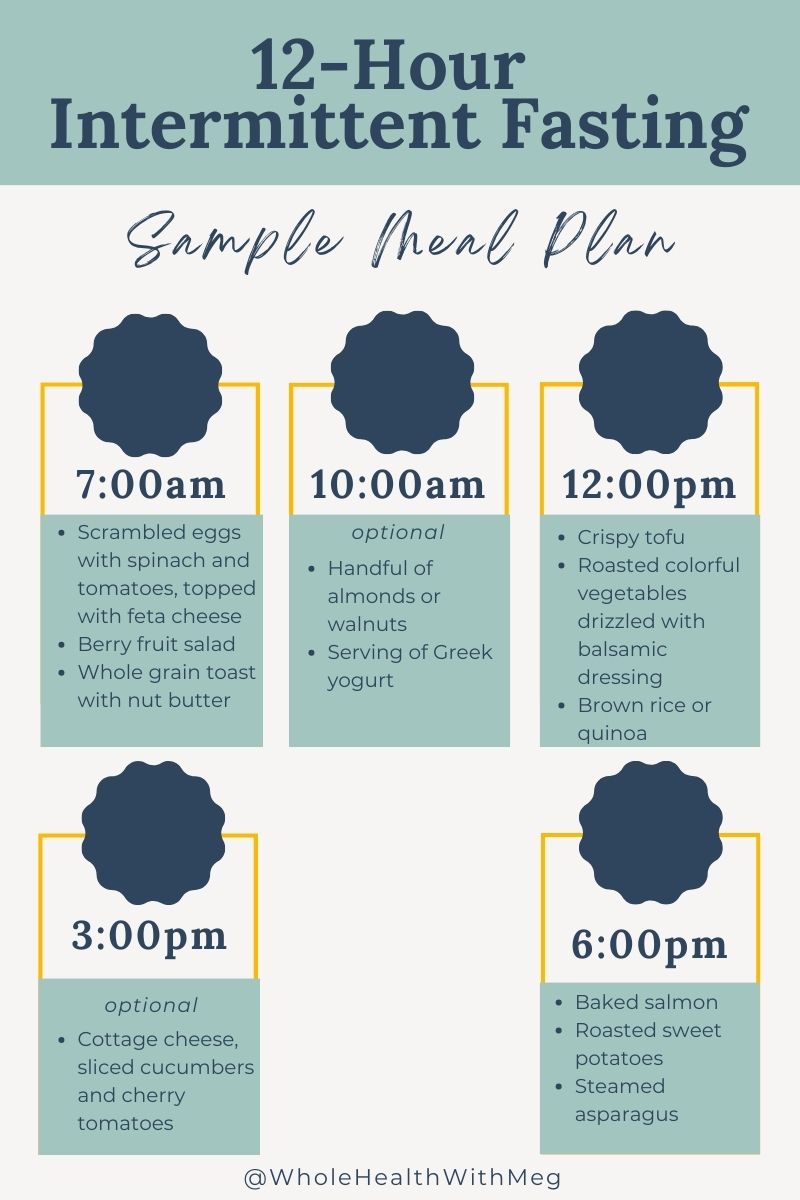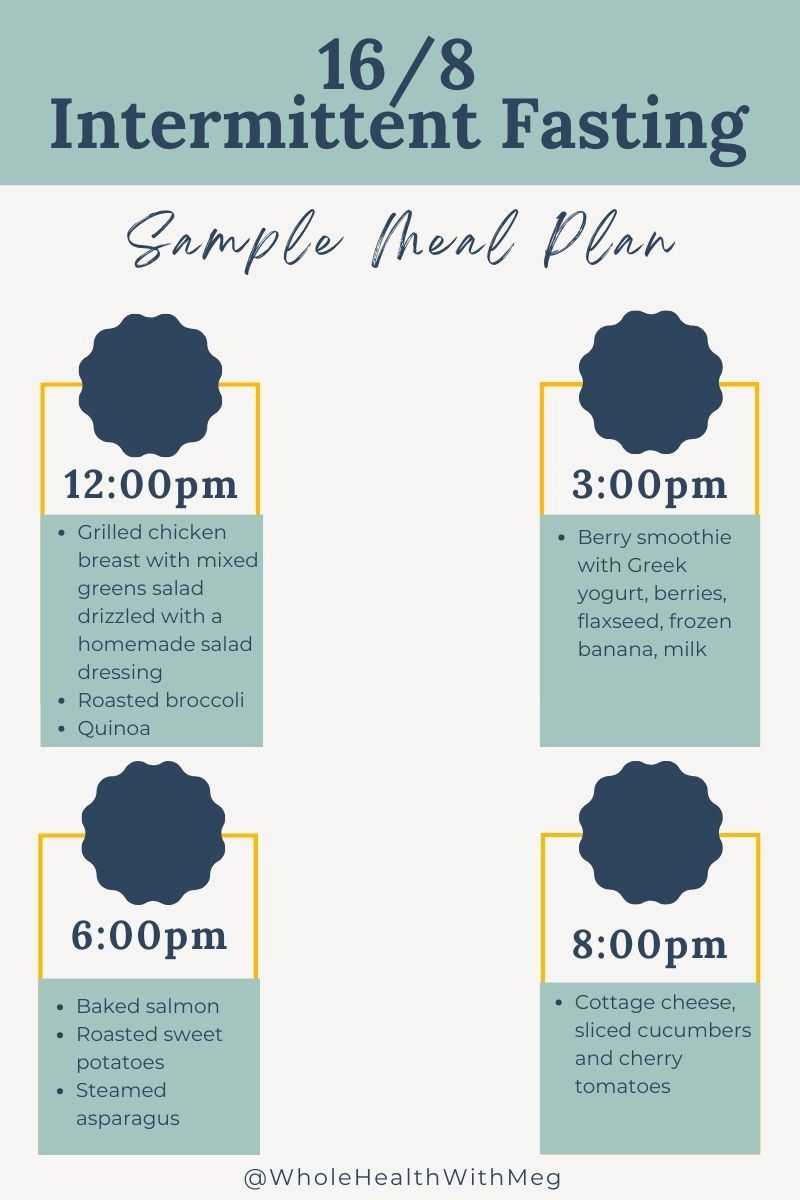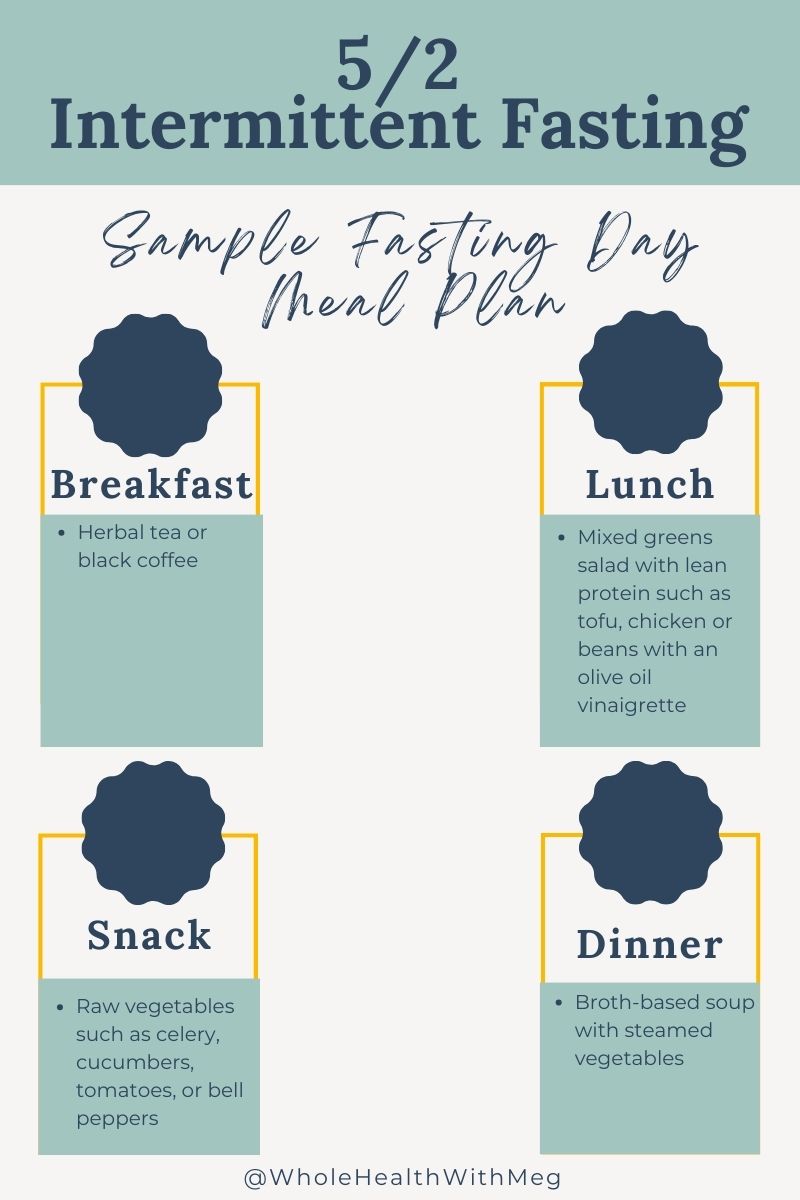
Intermittent Fasting and Diabetes
Is intermittent fasting truly beneficial for those managing diabetes?
In the ever-evolving landscape of nutrition, one topic that has risen in popularity is intermittent fasting.
With its potential benefits of weight control, improved metabolic health and improved insulin sensitivity, intermittent fasting has captured the attention of many.
In this blog, I dive into the science behind this pattern of eating to help you decide if incorporating fasting into your lifestyle is right for you.
Keep reading to learn about the connection between fasting, health and diabetes management.
Understanding Diabetes
Diabetes is a condition when the body can no longer function to break down carbohydrates normally.
The pancreas is the organ that plays a vital role in regulating blood sugar levels. To provide your body energy, carbohydrates are broken down into sugars (glucose) and released into the bloodstream.
This initiates the pancreas to produce insulin, the hormone that acts as a key to allow sugars from the bloodstream to enter into cells. Energy is provided and your body is able to perform necessary functions.
With diabetes, your body either doesn’t make enough insulin or cannot use it normally to regulate blood sugars. Over time, glucose builds up in the bloodstream and blood sugar levels remain high to meet the criteria for prediabetes or type 2 diabetes.
Understanding Intermittent Fasting
Intermittent fasting (IF) is a pattern of eating that cycles between periods of fasting and eating.
It differs from other diets for diabetes that focus on specific foods or calorie restrictions and instead primarily revolves around when you eat.
Types of Fasting
Time Restricted Eating
Time-restricted eating (TRE) is a dietary approach that focuses on limiting the daily eating window to a specific time frame. This is typically between 8 to 12 hours. The individual would then fast for the remaining hours of the day.
As a diabetes dietitian, I am a proponent of a 12 hour fast for most people. For example, fasting between 7:00 pm and 7:00 am.

Sample 12-Hour Fasting Meal Plan
Breakfast (7:00 AM)
Scrambled eggs with spinach and tomatoes, topped with feta cheese
Berry fruit salad
Whole grain toast with nut butter
Morning Snack (10:00 AM) - optional
Handful of almonds or walnuts
Serving of Greek yogurt
Lunch (12:00 PM)
Crispy tofu
Roasted colorful vegetables drizzled with homemade balsamic dressing
Brown rice or quinoa
Afternoon Snack (3:00 PM) - optional
Cottage cheese, sliced cucumbers and cherry tomatoes
Dinner (6:00 PM)
Baked salmon
Roasted sweet potatoes
Steamed asparagus

16/8 Intermittent Fasting
The 16/8 fasting method is another example of time restricted eating and is characterized by an eating window of 8 hours and a fasting period of 16 hours.
Often, this translates to skipping breakfast and starting intake in the late morning or early afternoon.
Sample 16/8 Meal Plan
Noon (Breaking the Fast)
Grilled chicken breast with mixed greens salad drizzled with a homemade salad dressing
Roasted broccoli
Quinoa
Afternoon Snack (3:00 PM)
Dinner (6:00 PM)
Baked salmon (LINK)
Roasted sweet potatoes
Steamed asparagus
Evening Snack (8:00 PM)
Cottage cheese, sliced cucumbers and cherry tomatoes

5:2 Fasting
The 5:2 fasting method is a flexible approach to intermittent fasting. It involves alternating between regular eating days and fasting days. It is an example of alternate day fasting (ADF).
On fasting days, individuals significantly restrict their calorie intake, typically consuming around 500 calories. On non-fasting days, individuals eat normally.
Sample 5:2 Meal Plan
Here is a sample plan for a fasting day;
Breakfast
Herbal tea or black coffee
Lunch
Mixed greens salad with lean protein such as tofu, chicken or beans with an olive oil vinaigrette
Snack
Raw vegetables such as celery, cucumbers, tomatoes, or bell peppers
Dinner
Broth-based soup with steamed vegetables
Benefits of Intermittent Fasting
Weight Management - fasting can help reduce daily caloric intake, leading to weight loss when combined with a balanced diet.
Improved insulin sensitivity - fasting has shown to help manage blood sugar control by enhancing insulin sensitivity.
Cardiovascular health - intermittent fasting can reduce risk factors like high blood pressure, cholesterol levels and inflammation.
Appetite control - fasting can help to regulate hunger hormones, making it easier to control appetite.
Simplicity - fasting is a straightforward approach to meal timing, making it easier for some people to adhere compared to other eating patterns.
Challenges and Considerations
While intermittent fasting can offer numerous benefits, there are common challenges and considerations to be aware of.
Hunger and appetite - fasting can lead to increased feelings of hunger and cravings, especially in the early stages.
Energy levels - there have been reports of lower energy levels, fatigue and irritability during fasting periods.
Nutrient intake - it is important to consume essential nutrients during the eating window to prevent nutrient deficiencies.
Sustainability - long term adherence can be challenging for some when an approach that is not suitable for their lifestyle is chosen.
Hydration - it is important to stay hydrated even during fasting periods as fasting can lead to dehydration.
Medications - if taking diabetes medications, it is extremely important to consult with a healthcare professional to understand the timing and dosing of certain medications.
Intermittent Fasting and Diabetes
Since intermittent fasting has been shown to have an impact on glucose control and insulin sensitivity, researchers have gained interest in understanding if intermittent fasting could be a treatment option for diabetes.
In one study, it was shown that intermittent fasting does seem to have a positive effect on plasma glucose levels by lowering hemoglobin A1c.
Researchers also examined insulin resistant individuals and learned that alternate day fasting produced greater reductions in fasting insulin when compared to daily calorie restriction.
Intermittent fasting can be a useful strategy to manage diabetes and improve glucose control. However, I do want to emphasize that not every type of intermittent fasting is for everyone.
People with type 2 diabetes who require insulin or individuals experiencing frequent episodes of hypoglycemia (low blood sugar) should not follow certain fasting patterns.
It is essential to work with your physician and a nutrition expert to safely choose the best type if interested in incorporating this approach.
Tips for Getting Started with Intermittent Fasting
Schedule a Clarity Call - before starting any fasting regimen, especially if you are living with diabetes or other health conditions, schedule a free clarity call so we can discuss the best approach.
Choose the right type - intermittent fasting has a variety of approaches, each with its own characteristics and potential benefits. Along with working with your care team, individual goals, preferences, health conditions should be considered.
Acknowledge the benefits and challenges - Multiple studies have shown fasting can lead to various psychological changes in the body including improved insulin sensitivity. However, there are potential challenges like hypoglycemia or hyperglycemia to be aware of.
Start slowly - if fasting is new then ease into it. Begin with a shorter fasting window, such as 8 hours overnight then gradually increase the duration as your body adapts and you understand what your body needs. It can be extremely helpful to wear a CGM for a limited time to help make the best decisions.
Stay hydrated - drink plenty of water during both eating and fasting periods to stay hydrated. Herbal teas, black coffee, carbonated water and plain water are all great options.
Focus on nutrients - during the eating window, focus on nutrient-dense meals that include lean proteins, complex carbohydrates, healthy fats and plenty of vegetables.
Listen to your body - pay attention to your body’s hunger cues and avoid overeating during eating windows. Consider adjusting your fasting schedule or method depending on the feedback from your body.
Blood Sugars Made Simple
Intermittent fasting can offer an array of benefits for those living with diabetes. However, it is equally important to navigate the journey with awareness, as fasting can pose challenges.
Individual experiences with fasting do vary and what works for one person may not work for another. This is why it is crucial to approach this dietary pattern with personalized care and support.
You can schedule your Clarity Call today to get started on your journey. Together, we can explore if fasting is right for you and the best method to help you move the needle toward improved health!